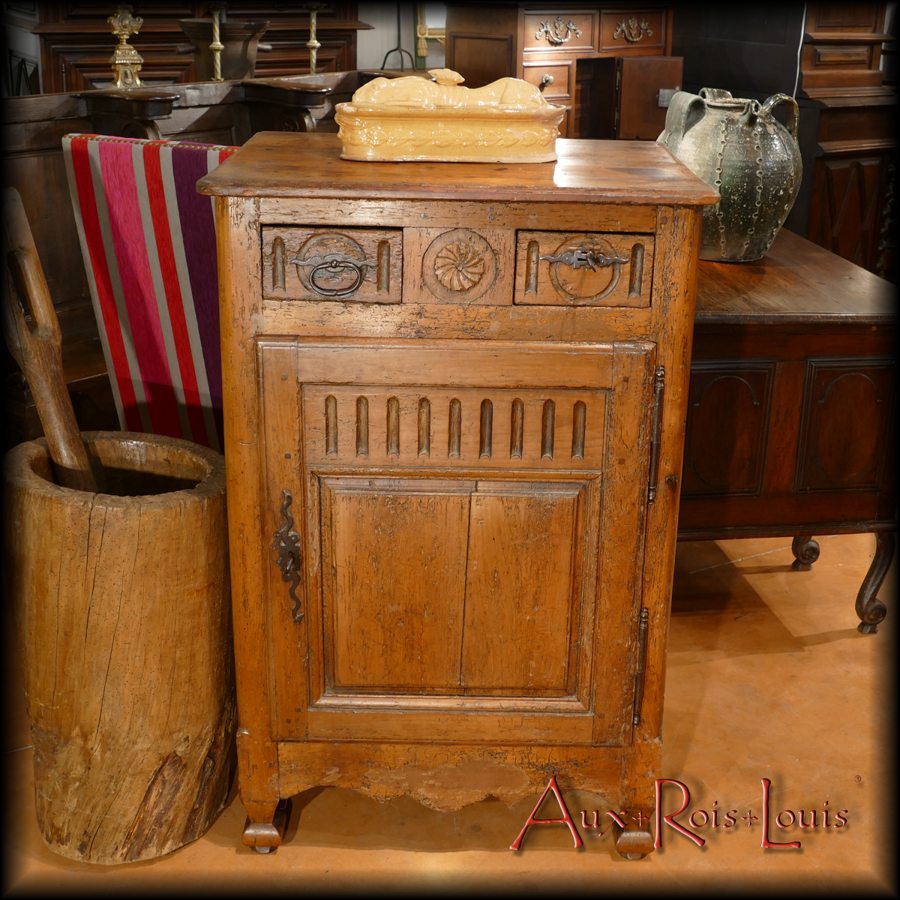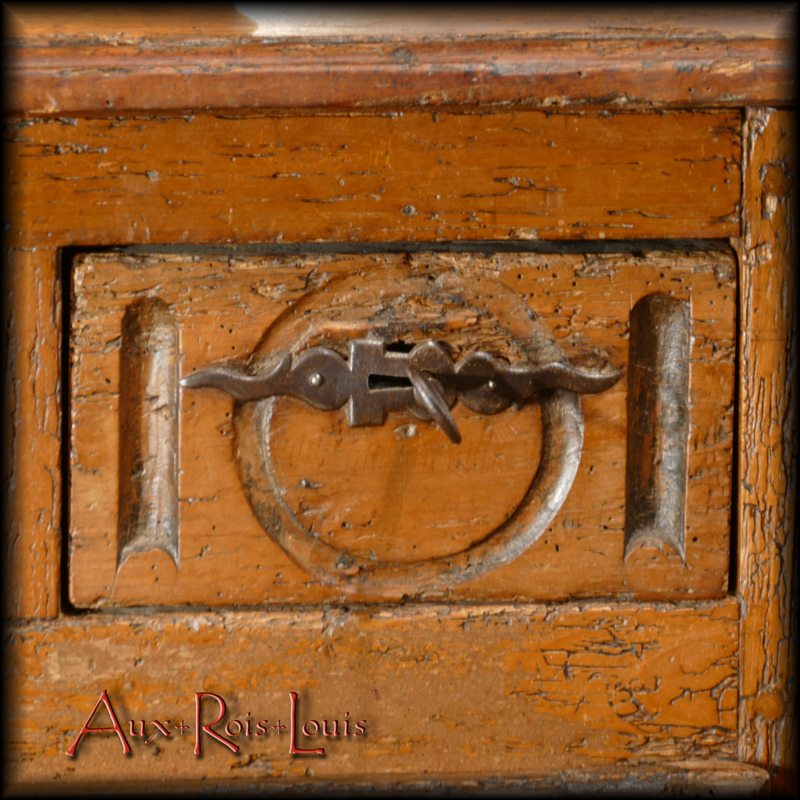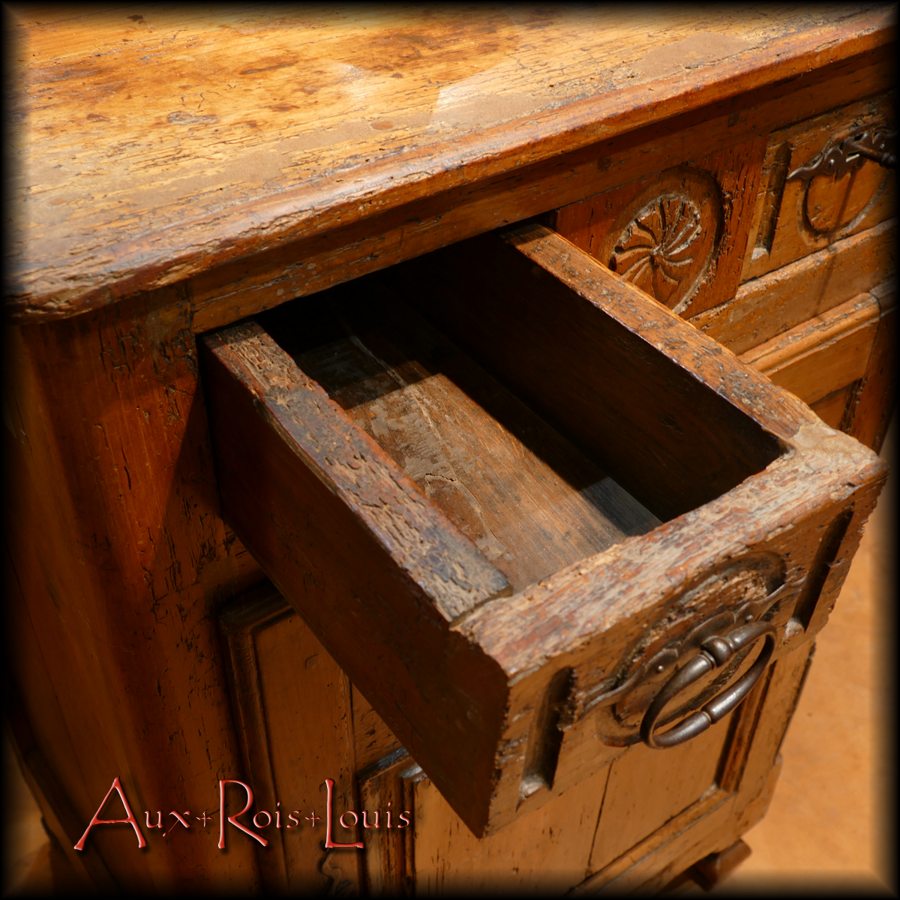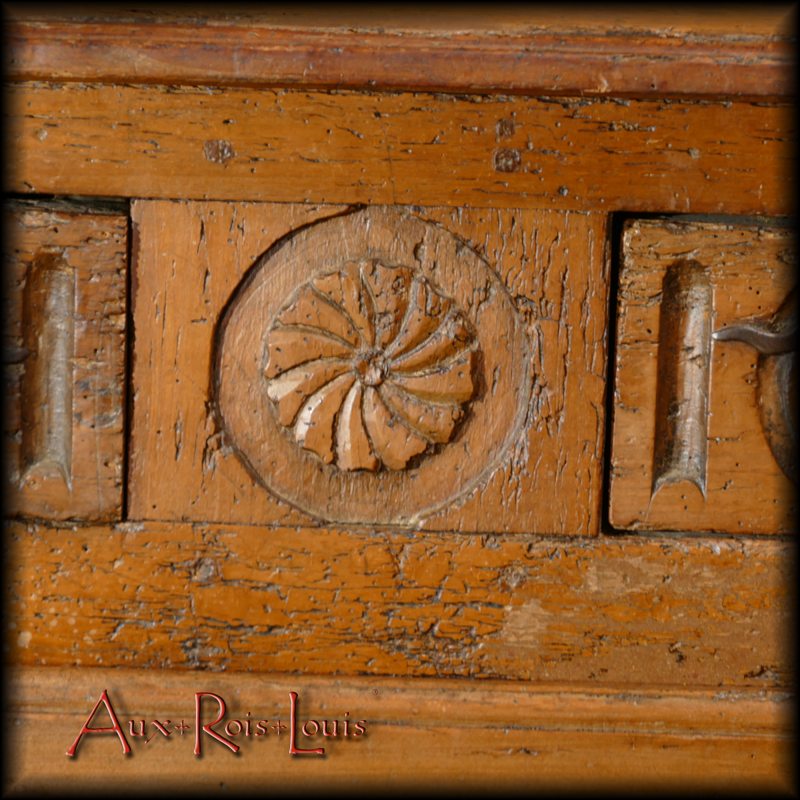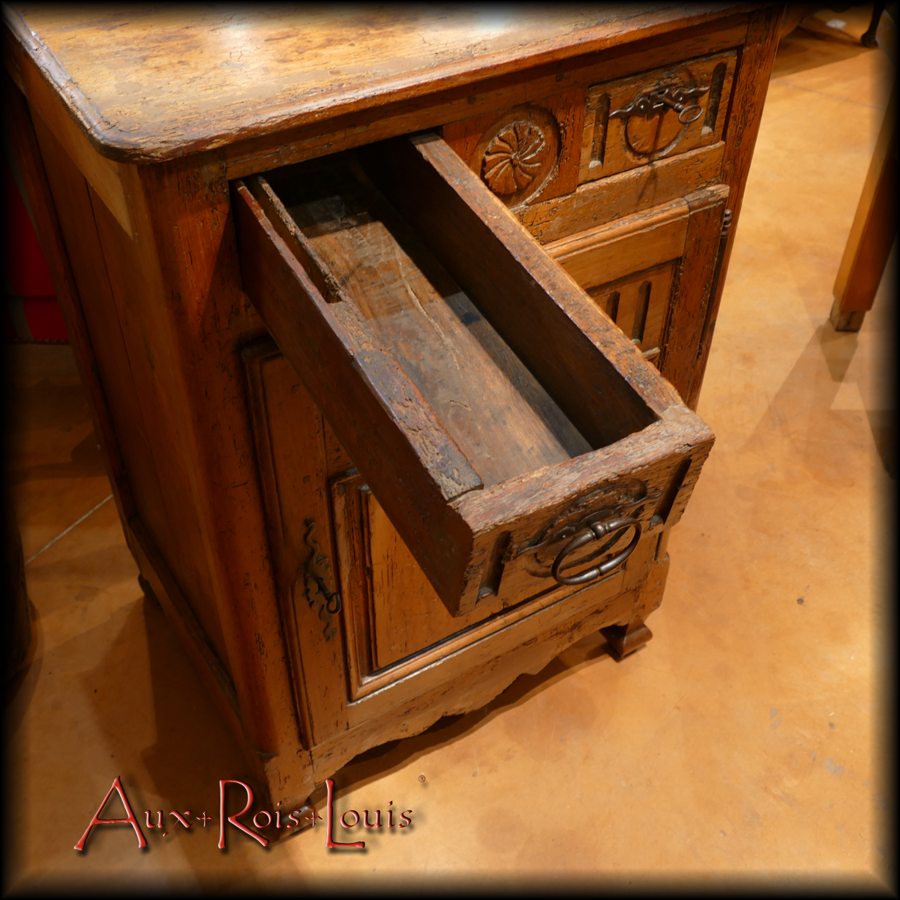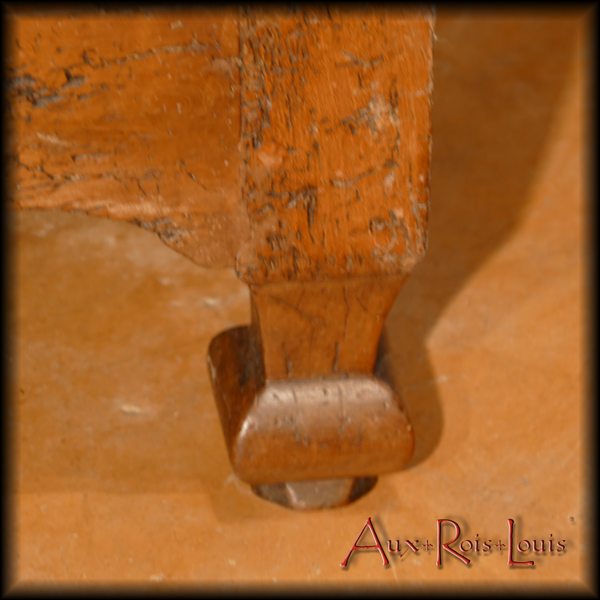THE FORGOTTEN FLAVORS OF OLD CONFITURIERS
From the thirteenth to the nineteenth century, we preserved in honey, sugar or vinegar, all the wonders that we grew in gardens, orchards and vegetable gardens. The term “jams” (confitures) thus encompassed a wide variety of preparations made from flowers, herbs, berries, fruits and vegetables, likely to delight the guests in any season. The term jam also referred to candied fruits, fruit jellies, jellies, marzipans, pastilles and dragees. These sweets were not renamed “confectionery” until the 19th century.
Specifically to store these varied delicacies, all therefore classified in the category of jams, pieces of furniture called “confituriers” came to complete the range of family furniture at the dawn of the 18th century.
It is no coincidence, this period corresponds to the democratization of the use of sugar, until then delivered at a high price exclusively in pharmacies of apothecaries. At the end of the 17th century, this “white gold” made its massive entry into grocery stores and, consequently, into many more homes.
If these jam cabinets were originally the prerogative of wealthy families, they too have gradually democratized and made their appearance in peasant families who made it a point of honor to offer this type of furniture to newlyweds.
Jam cabinet in cheery – late 18th century – Périgord
This pretty cherry confiturier, made on a farm in the Périgord in the 18th century, perfectly illustrates the joy and pride of this appropriation.
As tradition and common sense would have it, the planks of wild cherry had been chosen standing years in advance and dried for a long time in anticipation of the weddings to come.
When the time was right, a furniture carpenter had been invited to stay at the farm to make this famous confiturier on site.
Honored by this order, this craftsman clearly put his heart, his ardor, his know-how and his imagination into it, nourished by the stylistic currents of the moment and, as we will see, by a very personal fantasy.
If we look in detail, this piece of furniture inspired by the Louis XV style begins a transition to the Louis XVI style thanks to neoclassical ornamental motifs.
The rectilinear panel of the door is thus surmounted by fixed grooves, a Louis XVI style motif. The drawers are decorated with an oval pattern, a kind of rounded hollow, also typical of the Louis XVI style.
The thick planks that make up the sides of the drawers exude a rustic peasant charm, but not only. One of them has a small hiding place for coins … at the rear of the left drawer.
In the center, between the two drawers, a spiral floral motif is a pure invention of its author, as is the unexpected shape of the legs; These two peculiar signs mark his signature, in a way.
The whole constitutes a little gem of popular art, original and endearing.

![Jam cabinet in cheery – late 18th century – Périgord – [MP023]](https://www.aux-rois-louis.com/wp-content/uploads/2021/11/MP023_084x900-900x450.jpg)
![MP023_084x900 Jam cabinet in cheery – late 18th century – Périgord – [MP023]](https://www.aux-rois-louis.com/wp-content/uploads/2021/11/MP023_084x900.jpg)

